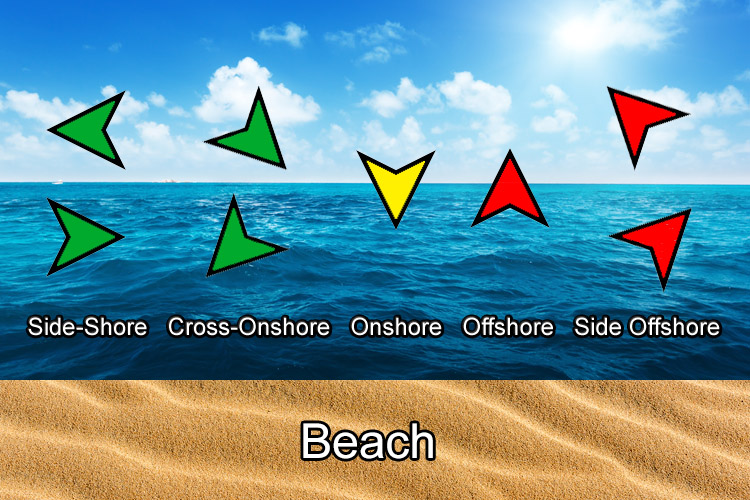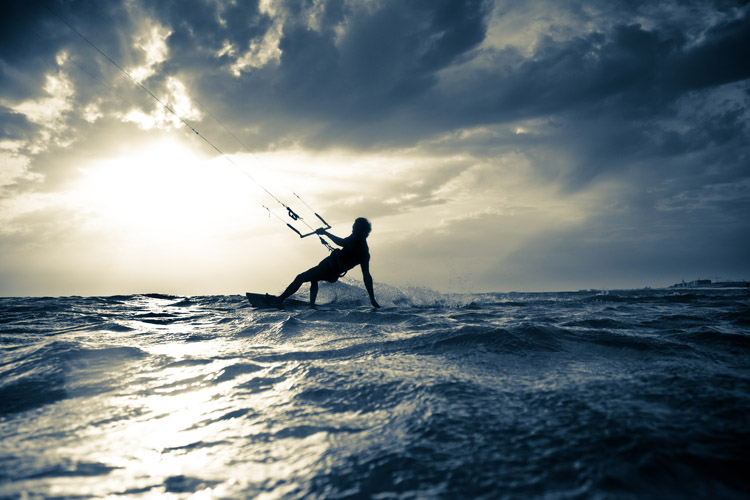A kiteboarder must assess the wind (speed and direction) and ocean (swell size, currents, and tides) conditions before launching his kite in the air. Stay safe and always wait for the right weather conditions to rig your equipment.
Kiteboarding is a thrilling outdoor sport and, like many other activities, it involves dangers and risks.
Mother Nature can be unpredictable, and weather conditions sometimes change in the blink of an eye.
The first thing you need to do before getting wet is to double-check your kite gear.
Make sure the kite, the lines, and the control bar are working properly and show no wear and tear.
You may already know what to expect when you arrive at your favorite kite spot.
Surf forecasts give us relevant data - that's true. But there's nothing like assessing the conditions on-site with your own eyes.
Wind is the most important variable in the kiteboarding equation because it represents the primary source of power for your kite.
The wind can offer you an unforgettable session but can also put your life in danger.
You will encounter four basic wind directions. They are as follows:
Side-Onshore
The safest wind direction for kiteboarders allows you to sail back to the beach easily.
Cross-Shore
A good but not perfect wind direction because the kite might pull you away from the shore.
Onshore
You must proceed with caution because the wind will be pushing you toward the beach.
Offshore
A dangerous scenario because the wind will constantly push you away from the coastline and into the open ocean.
Side-Offshore
A threatening situation in which the wind will push you further out to sea.

Rain, Wind Direction, and Clouds
So, what are the ideal weather conditions for a safe kiteboarding session?
A perfect scenario for kiteboarding would be a sunny, cloudless day with constant side-shore winds blowing in the 15-to-20 knots range.
And what could eventually put your life in jeopardy?
A dangerous kiteboarding context involves a rainy sky with black clouds and strong gusty winds of over 30 knots blowing over challenging swells.
In northern Europe, the wind systems are created by low-pressure areas, so the fronts should be analyzed carefully because of the extremely shifting wind conditions associated with them.
Ideally, riders should let the warm and cold fronts pass before pumping their kites. Sailing away before they arrive is not a wise move.
Clouds can tell us a lot about what's coming up ahead and if it's time to stay away from the water.
Take your time and observe them for a few minutes before going out.
Kites are not toys and can be deadly weapons. Stay safe, and respect the sailing rules.
